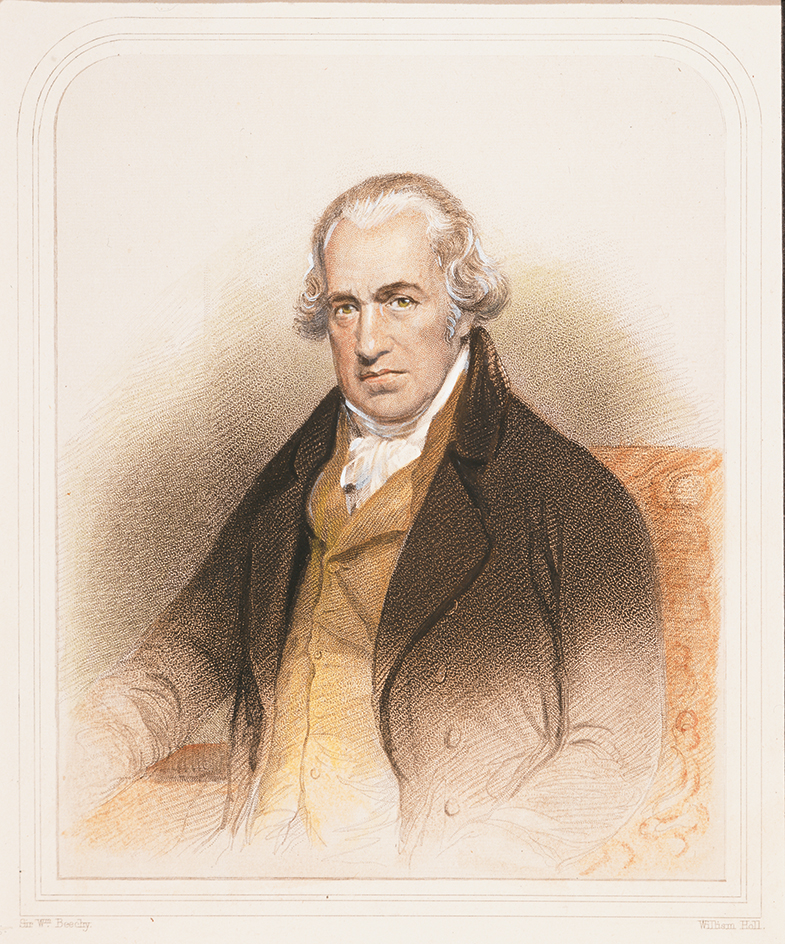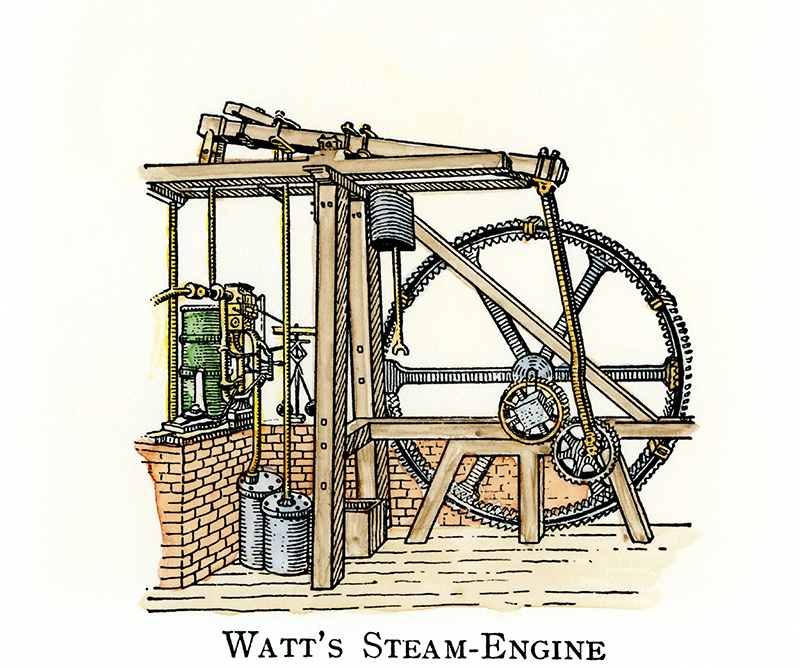Watt, James (1736-1819), was a Scottish engineer whose improved engine design first made steam power practicable. Crude steam engines were used before Watt’s time, but they burned large amounts of coal and produced little power. Their reciprocating (back-and-forth) motion restricted their use to operating pumps. Watt made steam engines more efficient by inventing the separate condenser. This device changed steam back into water by cooling. Watt’s later improvements made possible the wide application of steam engines, contributing much to the growth of modern industry.

Watt was born on Jan. 19, 1736, in Greenock, Scotland. He was the son of a shopkeeper and carpenter. When Watt was 18, he went to Glasgow and then to London to learn the trade of a mathematical instrument maker. In 1757, Watt became instrument maker at the University of Glasgow.

In 1763, Watt received a model of a Newcomen atmospheric steam engine to repair. Although he made it work, Watt was not satisfied with the way it operated and set about to improve it. He obtained advice from students and professors at the university and discovered the principle of the separate condenser. Watt patented his discovery in 1769.
In the Newcomen engines, steam filled the cylinder space under the piston. The steam was then condensed, leaving a vacuum into which the piston was pushed by atmospheric pressure. This meant alternately heating and chilling the cylinder.
Watt reasoned that because steam was an elastic vapor, it would fill any container into which it was admitted. If the steam-filled cylinder opened into a separate, chilled container, steam would move into the container and condense, producing the vacuum in the cylinder without having to chill it.
Watt spent several years trying to develop an operating engine of the new design. In 1774, he obtained the support of Matthew Boulton, an energetic Birmingham manufacturer. The two organized a company to rent the design of the new engine and to supervise its construction and operation. The firm succeeded. In 1782, Watt patented the double-acting steam engine, which used steam pressure to push a piston both ways. He also developed the parallel motion linkage to transmit the reciprocating motion of the piston to a rocking device called a working beam. The working beam in turn transferred the motion to a crank and flywheel to produce rotary motion.
Watt also invented a throttle valve, a governor for regulating engine speed, and many other devices. He did scientific research in chemistry and metallurgy and was one of the first people to suggest that water is a compound, not an element.
Watt retired a wealthy and respected man in 1800. He died on Aug. 25, 1819. The power unit the watt is named in his honor (see Watt ).
